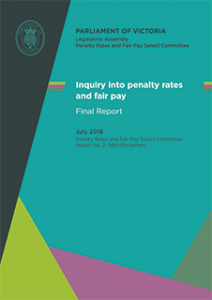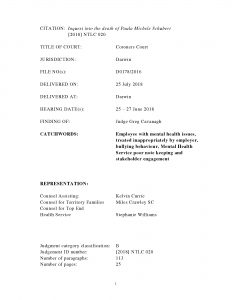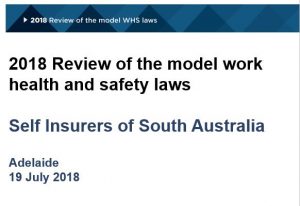
The Queensland government was the first Australian State to introduce a licencing scheme for the providers of contract workers and temporary labour. As a result, enforcement activity by the regulator there will likely set the scene for similar actions in other States particularly as Victoria has opened it public consultation on its labour hire regulations. Sadly workplace health and safety seems to have been overlooked in Victoria’s draft labour hire regulations and current consultation process.
Last week the Queensland Government

 Australia currently has a lot of official inquiries into workplace issues that affect the occupational health and safety (OHS) of workers. It is almost impossible to keep up with them and, as a result, some important voices are being missed, but even if they spoke, there is a strong chance they will not be listened to. The Victorian Government has released the final report of the Inquiry into Penalty Rates and Fair Pay. There are two overt mentions of OHS that don’t seem to go anywhere.
Australia currently has a lot of official inquiries into workplace issues that affect the occupational health and safety (OHS) of workers. It is almost impossible to keep up with them and, as a result, some important voices are being missed, but even if they spoke, there is a strong chance they will not be listened to. The Victorian Government has released the final report of the Inquiry into Penalty Rates and Fair Pay. There are two overt mentions of OHS that don’t seem to go anywhere. Last time we looked at the Australian Senate Inquiry into “
Last time we looked at the Australian Senate Inquiry into “

 Governments use legislation and the threat of punishment as a deterrent for dangerous actions and poor decision-making. Imposing harsh consequences is hoped to change the behaviour of companies and individuals. Occupational health and safety (OHS) laws are no different with deterrence being used to justify the introduction and enforcement of
Governments use legislation and the threat of punishment as a deterrent for dangerous actions and poor decision-making. Imposing harsh consequences is hoped to change the behaviour of companies and individuals. Occupational health and safety (OHS) laws are no different with deterrence being used to justify the introduction and enforcement of  South Australia’s occupational health and safety (OHS) regulator,
South Australia’s occupational health and safety (OHS) regulator,